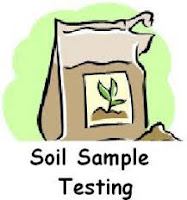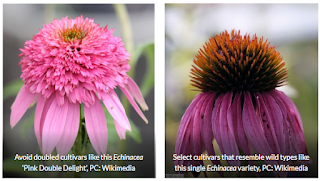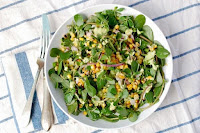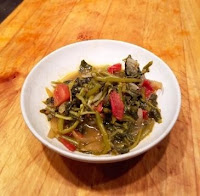 Our winter sunshine is a plus in this, as you can get outside even in January and February to mess with lumber, edging or stepping stones (unless the snow hits).
Our winter sunshine is a plus in this, as you can get outside even in January and February to mess with lumber, edging or stepping stones (unless the snow hits). Sunday, December 25, 2022
Winter: The best time to ponder the bones of your yard & garden
 Our winter sunshine is a plus in this, as you can get outside even in January and February to mess with lumber, edging or stepping stones (unless the snow hits).
Our winter sunshine is a plus in this, as you can get outside even in January and February to mess with lumber, edging or stepping stones (unless the snow hits). Friday, December 9, 2022
Plant, animal, & earth-friendly deicers??? Yes!
- Salts can cause injury to trees, lawns, shrubs
- salt run-off can harm our ground water
- they can corrode concrete
- and even do bodily harm to humans if handled improperly.
- And don’t forget about the poor little paws on your four-legged friends.
The most problematic element in these salts is chloride, a corrosive ion that damages metal and concrete. Chloride is also toxic to plants.
Salt damages plants by dehydrating plant tissues, causing burn, or by being toxic in high levels. While most plants have some tolerance to salt injury, repeated applications of deicing products during the winter can result in dieback or even death the following spring. Misapplications of deicers (i.e. dumping piles or using too much) can leach through the ground and into the water table or wash into the storm sewers, causing pollution. Before buying or using any product, read the label carefully and use only as directed.
 Potassium chloride: It’s expensive and not as widely used as a deicer because of rising costs of fertilizer. This works best when temperatures are above 15° F. Because it’s most commonly used as a fertilizer, it’s relatively safe to apply near plants.
Potassium chloride: It’s expensive and not as widely used as a deicer because of rising costs of fertilizer. This works best when temperatures are above 15° F. Because it’s most commonly used as a fertilizer, it’s relatively safe to apply near plants.Sodium chloride: It’s the most widely available and the cheapest. It doesn’t cause corrosion to concrete, and melts ice best when temperatures are in the 20s. It is the most damaging to plant material. If you use this product, use it sparingly and in small amounts!
Before using any de-icing product, clear away as much snow and ice with a shovel as possible. If heavy snow is predicted, then try to shovel more frequently. Remember, deicing products are not meant to melt all snow and ice, but rather aid you in your removal efforts. If you want to avoid adding chemicals to your landscape, then consider using sand or kitty litter. While they don’t melt snow, they can provide traction in slippery spots. Sand and kitty litter are also safe for pets and plants and can be swept up when the snow melts.
 |
Monday, November 28, 2022
Indoor Herbs for Holiday Meals!
 Do you love using fresh herbs in your culinary creations? Consider growing your herbs insideyour home where you can snip a fresh branch while you are cooking your meals!
Do you love using fresh herbs in your culinary creations? Consider growing your herbs insideyour home where you can snip a fresh branch while you are cooking your meals!
For an indoor culinary garden consider growing garlic, chives, basil, oregano, parsley, sage, rosemary or thyme. If you want to grow a tea garden you may want to plant spearmint, peppermint, lemon balm, lemon verbena, chamomile or catnip. It's not too late to start from seeds.
 Be sure to choose a container that provides good drainage, and fill with one or more of your favorite herbs. Light is very important so place your herb garden in a sunny location that receives at least half a day of sun. New information about indoor lighting has made it easier for the home gardeners. For grow lights, those labeled "cool white" work well. "Warm white" and "Daylight" may also work. Lamps tailored to a plant's needs are also available. Be to water regularly. After the threat of frost passes, you can place your garden outdoors and enjoy fresh herbs all year round.
Be sure to choose a container that provides good drainage, and fill with one or more of your favorite herbs. Light is very important so place your herb garden in a sunny location that receives at least half a day of sun. New information about indoor lighting has made it easier for the home gardeners. For grow lights, those labeled "cool white" work well. "Warm white" and "Daylight" may also work. Lamps tailored to a plant's needs are also available. Be to water regularly. After the threat of frost passes, you can place your garden outdoors and enjoy fresh herbs all year round.
Monday, November 21, 2022
Your Christmas Tree - Before & After
A few tips for a great holiday celebration around your beautifully decorated tree.
- Use a tree stand with an adequate water-holding capacity. A tree stand should have a water basin that provides 1 quart of water per inch of stem diameter. For most Christmas trees, the stand should hold at least 1 gallon of water. A cut tree will absorb a surprising amount of water, particularly during the first week, so replenish the water daily. Check the stand daily to ensure the water level does not go below the base of the tree.
- The tree stand should fit your tree. The ring must be large enough for the trunk of your tree to go through the hole. You don't want your tree flling over. Avoid whittling down the sides of the trunk to fit a stand. The outer layers of wood are the most efficient in taking up water and should not be removed.
- Cutting off a disk of wood about ¼" thick from the base of the trunk is all that is necessary before putting the tree in the stand. Make the cut perpendicular to the stem axis. Don't cut the trunk at an angle, or into a V-shape, which makes it more difficult to hold the tree in the stand and reduces the amount of water available to the tree. If the tree has been cut within the past 12 hours, it will not be necessary to recut the trunk. If the tree is to be stored for more than a couple of days before display, place its trunk in water and store it in a cool, protected area such as an unheated garage.
- Keep displayed trees away from sources of heat (fireplaces, heaters, heat vents, and direct sunlight). Lowering the room temperature will slow the drying process. Newer LED Christmas lights generate less heat. Always turn lights off when the tree is unattended. Displaying trees in water with the proper care is much more effective in reducing fire hazards than spraying trees with fire retardants.
- The temperature of the water used to fill the stand is not important and does not affect water uptake. Drilling a hole in the base of the trunk does not improve water uptake.
- Additives, such as floral preservatives, commercial tree preservatives, molasses, sugar, bleach, soft drinks, aspirin, honey, and other concoctions in the water is not necessary. Clean water is best to maintain freshness.
- Monitor your tree for dryness. Run your fingers across the needles to determine whether they are dry and brittle. If the needles break easily or fall off in your hand, the tree is dry and should be removed.
Saturday, October 15, 2022
Is this true...Chrysanthemums don't help Pollinators?
- Pollination is the process that takes place when pollen is moved between flowers for successful seed and food production and ensures that a plant or tree will produce mature fruit and a viable set of seeds that are capable of germination. What do birds and bees have to do with this? Birds, domestic honeybees, butterflies, and other insects and animals are responsible for the moving of the pollen among the flowers. Without the pollinators, there is no plant growth.
- Pollinators prefer some flowers over others, a concept known as Pollinator Syndromes. For example, because a butterfly has a long, slender mouth part (proboscis), they prefer flowers that are long and tube-like, also think hummingbirds. Some flies, on the other hand, have short, round mouth parts much like a sponge. For these pollinators and most bees, a wide-open flower is preferred. Or, for other pollinators, like moths, a flower that is open at night is preferred because that is when moths are active.
- My primary goal is to create a backyard ecology that promotes all pollinators - bees, birds, mammals, reptiles, insects - with plants that sustain them - whether native or non-native throughout the flowering seasons.

 |
| Echinacea choices - Tufts Pollinator Iniative |
Although pollinators prefer natives, says Tallamy, "If their mouthparts work, they don't care if it's native or non-native."
 |
| My new favorite bush Caryopteris 'Blue Mist' |
 Potted greenhouse mums that we see everywhere this time of year are not bred for their pollen, nectar, or accessibility to pollinators. Most are bred to have multiple petals which reduce accessibility to pollinators. Some good features about these mums is that they are bushy and provide cover for a variety of predators and parasites that naturally keep plant pests under control. Try an old fashioned Mum instead...or Autumn Asters...or Autumn Sedum!
Potted greenhouse mums that we see everywhere this time of year are not bred for their pollen, nectar, or accessibility to pollinators. Most are bred to have multiple petals which reduce accessibility to pollinators. Some good features about these mums is that they are bushy and provide cover for a variety of predators and parasites that naturally keep plant pests under control. Try an old fashioned Mum instead...or Autumn Asters...or Autumn Sedum!Monday, October 3, 2022
Seed Saving 101: Saving seeds for yourself and others
Happy Seed Saving and Gardening.
Wednesday, September 28, 2022
The Fall Vegetable Garden
 |
| Four Season Harvest - E Coleman |
Succession Planting
A continuous harvest is insured through succession planting, which allows for crops to mature at different times, provide a longer harvest period, and create a buffer if winter temperatures arrive unusually early or late. Well-timed, staggered plantings create a smooth transition from one harvest to the next for a steady supply through the winter. Cold hardy crops are planted outside in late summer, then a movable row cover or low tunnel is placed over them when temperatures drop below freezing. After the winter crops are harvested, open spaces can be reseeded with cold tolerant crops for an early spring harvest. Whenever a crop is harvested or grows beyond its prime it is removed, the soil is amended and new seeds are planted. All salad and Asia greens grow so rapidly that it is necessary to have sweet tender leaves. Overwintered crops protected by a row cover can be uncovered by the middle of March. These protected crops of Spinach, lettuce, leeks, and onions will begin to grow with the increased daylight and warmer days, but still tolerate nighttime freezing. The row cover can now be used to warm and protect a new planting of carrots, beets and lettuce. Crop rotation aids in not exhausting the soil, and pests and diseases overwintering in the soil and infecting the new crop. An example would be to follow early lettuce with beans, peas, or carrots. It should be three to four years before the same crop is returned back to the same plot in your garden.
Here's a link for Idaho: Vegetable Planting Calendar.
Garden crops
Garlic Allium sativum Garlic is an essential ingredient in most savory dishes, and is another flavorful plant that can be used at any stage of growth. In Asia, young green garlic is common and has a mild fresh flavor. Garlic is planted in October to allow for the roots to establish before winter. The garlic beds are then covered with straw or a row cover, which is removed in spring. It is related to both onions, leeks, shallots, and chives. When considering a location, it is important to also note that Garlic does not do well where Brassica family crops grew the year before. When the green tops begin to die back the garlic bulbs are loosened and pulled. They must be allowed to cure out of direct sun, with good air flow.
Leeks Allium porrum Leeks are an important part of my year-around garden. They are an essential ingredient in winter and spring soup. Leeks are a long season crop and are started early from seed inside, then transplanted out into composted deep holes for long blanched white stems. For a winter harvest they can be protected by row covers and harvested well into the spring. If leeks remain after winter and they begin to go to seed, the flower stem can be removed and sautéed with butter, then the root will form a white bulb in early summer. These “leek bulbs” are wonderful in stews and roasted. Early leeks can be planted in succession and harvested into summer.
Spinach Spinacia oleracea Spinach is a hardy green that can be harvested almost all winter. It will germinate and grow at temperature just above freezing. Fall planted spinach can be overwintered under row covers and harvested right up until hard freezes. October plantings will overwinter very small and begin growing in the early spring for a fresh new crop when the winter harvest has depleted. Spring planting can start as early as January and continue through April for an almost uninterrupted harvest. During the heat of summer Spinach goes to seed rapidly and other greens can be consumed until it cools and the fall crop begins.
Tatsoi Brassica rapa var. narinosa Tatsoi is an Asian green that forms a compact, thick rosette and has a long harvest period. It is both heat and cold tolerant and is excellent both in salads and stir-fries. Succession plant beginning in spring at 2-3 week intervals for a continuous harvest. They should be harvested before bolting for a less bitter flavor. Control flea beetles and other pests with a floating row cover.

Carrot Daucus carota Carrots planted the first of August can be left in the ground with row covers for protection and harvested all winter. The cold-soil storage enhances the sweetness and flavor as they remain in the ground. New spring sowing can be made in December for an early May harvest.
Onions Allium cepa Fresh onion all growing season is attained by planting a combination of seeds and transplants. January sown ‘Copra’ seeds will be transplanted into well composted soil where lettuce has been grown previously and provide the main harvest of storage onions. Fall planted overwintering ‘Walla Walla Sweet’ onions protected by a row cover provide green onions during the spring through thinning, and will produce an early large bulb in June.
Beet Beta vulgaris From beet green at thinning time to baby beets, and fall storage beets are a widely available and flexible root crop. Beets do best in a neutral pH soil with a generous amount of organic matter. Beets can be sown under row covers in January for an early spring harvest, all the way to August for a fall harvest. They should be thinned to 2 inches apart and the thinnings can be added to a salad.
Monday, September 19, 2022
Growing Garlic - Misses & Hits!
 The first time I planned garlic was in the spring of 2018
and thought I had to harvest in the fall.
However, when fall arrived, and I pulled up my first garlic plant, there
was nothing there. Let me tell you about three major mistakes in planting
garlic the first time.
The first time I planned garlic was in the spring of 2018
and thought I had to harvest in the fall.
However, when fall arrived, and I pulled up my first garlic plant, there
was nothing there. Let me tell you about three major mistakes in planting
garlic the first time. Garlic may
generally be divided into two subspecies: ophioscorodon (hardneck or topset
garlic) and sativum (softneck or artichoke garlic). Hardneck garlic produces
elongated flower stalks (technically called scapes) and bulbils at the top of
the stalk. Softneck garlic does not produce bulbils, except in times of stress.
Garlic may
generally be divided into two subspecies: ophioscorodon (hardneck or topset
garlic) and sativum (softneck or artichoke garlic). Hardneck garlic produces
elongated flower stalks (technically called scapes) and bulbils at the top of
the stalk. Softneck garlic does not produce bulbils, except in times of stress.

Tuesday, August 30, 2022
If You Can't Beat 'Em, Eat 'Em - Purslane

Purslane is an opportunistic plant and grows in nearly every country in the world. It has been cultivated for over 4000 years both for food and for its medicinal qualities. It is easily identified by its prostrate habit and succulent-like leaves that resemble those of a miniature Jade plant; about fingernail sized. The stems are reddish and radiate from a central point. The side stems can also root, so there may be several radians in the same plant. The taste is described as slightly tart, salty, and similar to spinach or watercress. Believe it or not, it has been found to have more beneficial nutrients than most vegetables! It is described as a "superfood" and one of the most nutritious foods on the planet.
There are some great ways to use this superfood in your kitchen. The leaves and stems are edible and can be prepared in many ways, both raw and cooked. But remember, as with all vegetables you eat, ensure that the product is clean and free from pesticides or herbicides. Give this “weed” a place on your table at least once and try it. Remember, if you can’t beat ‘em, eat ‘em! Especially when they are so good for you! While an internet search will yield many recipes, following are a couple I have prepared and enjoyed.
Saturday, August 13, 2022
Meet the Mason Bees
 The favorite food for their
brood includes anything that flowers in spring and some nectar. They generally
travel only short distances from their nesting site for nectar sources (around
200 to 300 feet is normal). Females collect this food, bring it to their nests
and knead it into a ball, mixing it with nectar and their saliva. When the food
store is big enough, they lay an egg on top of this mass and seal-off the
chamber or cell with mud. Then they go to work on the next cell. The larvae grow and by the
end of summer, metamorphose into pupae and later into adults, which remain safe
and sound inside the nest until the next spring. They begin emerging when
temperatures reach 50 to 55 degrees.
The favorite food for their
brood includes anything that flowers in spring and some nectar. They generally
travel only short distances from their nesting site for nectar sources (around
200 to 300 feet is normal). Females collect this food, bring it to their nests
and knead it into a ball, mixing it with nectar and their saliva. When the food
store is big enough, they lay an egg on top of this mass and seal-off the
chamber or cell with mud. Then they go to work on the next cell. The larvae grow and by the
end of summer, metamorphose into pupae and later into adults, which remain safe
and sound inside the nest until the next spring. They begin emerging when
temperatures reach 50 to 55 degrees. Wednesday, August 3, 2022
Don't Move Firewood!
most common methods for
 |
| Mountain Pine Beetle |
 |
| Gypsy Moth |
 |
| Thousand Cankers Disease |
- Do you know where the wood was cut?
- Never transport or burn wood from out of state.
- If available, purchase local firewood.
- Firewood is often available at the camping location.
- Leave any unburned wood in place. Do not transport it.
- Know if the wood is treated, kiln dried or debarked.
- Know what species of wood you are burning.
For more information, contact your local University of Idaho
Monday, August 1, 2022
Too much sun for my tomatoes?
Sunday, July 31, 2022
Edible Native Plant Landscaping - The Real “Paleo” Diet Available in Your Own Backyard
Here is a sampling of plants gathered by Shoshone Native Americans
for sustenance:
Camas Bulb (Camassia quamash)
Arrowleaf Balsamroot - Wild Onion
- Bitterroot
- Arrowleaf Balsamroot
- Tobacco Root
- Serviceberry
- Chokecherries
Currant
Bitterroot - Pine nuts
- Seeds from Junegrass, Bluebunch Wheatgrass, Thickspike Wheatgrass, and Nevada Bluegrass
Wild Carrot
Kouse - Kouse (also called “Biscuit Root” by non-native travelers)
- Sunflowers
- Huckleberries
- Wild Rhubarb
The list could continue, and the above links will give more
information about each type of plant. But which ones would grow well in your
garden? A good place to start collecting some tips is at the Idaho Native Plant
Society resource website. Specifically, the bulletin Landscaping
with Native Plants from the University of Idaho and the Landscaping
with Native Plants of the Intermountain Region from the BLM contain
detailed notes and descriptions of nearly all of the edible plants from the
above list. The guides include landscape uses and notes, regional
considerations, availability, and pollinator attractiveness. Additionally, the
two guides specify which of the plants are drought tolerant, how large they
grow, how much water and sunlight they need, when they flower, and what color
they bloom.


















